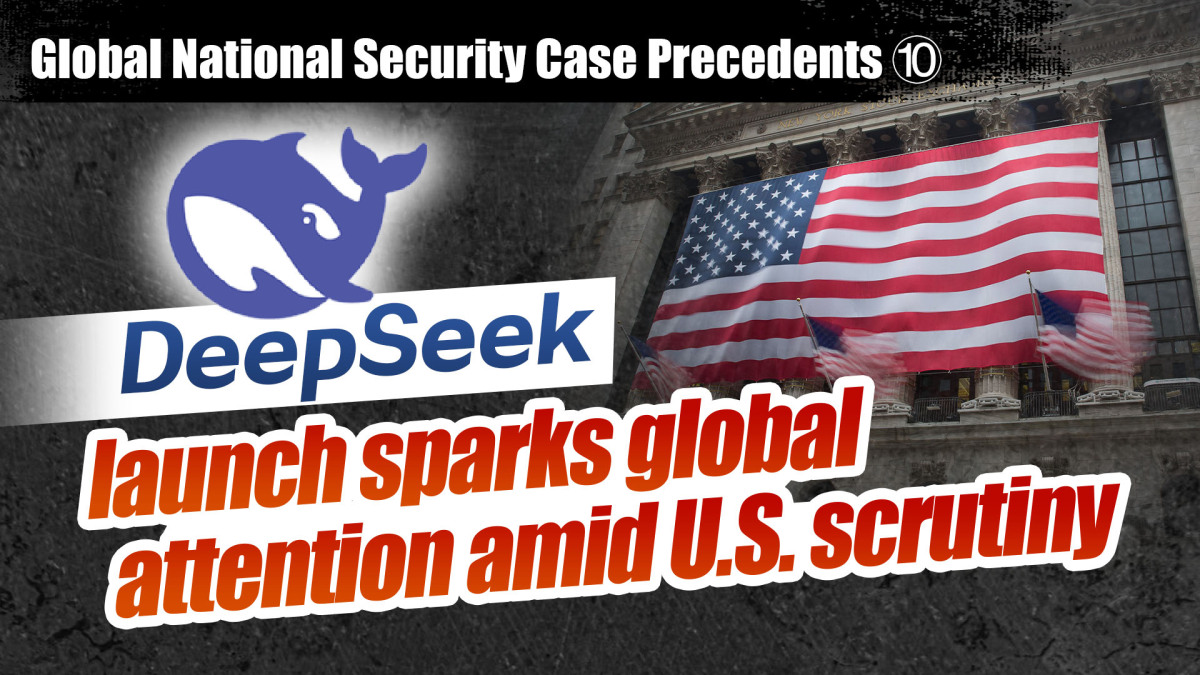
The launch of China's AI model DeepSeek has taken the tech world by storm, amassing over 20 million daily active users within just 20 days and achieving a market valuation of US$15 billion. This rapid rise has prompted renewed scrutiny from the U.S., reminiscent of the aggressive tactics employed against Huawei and TikTok in recent years. Critics argue that the U.S. is using "national security" as a pretext to stifle foreign innovation while allowing domestic tech giants to monopolize data and computing power.
Timeline of Events Surrounding DeepSeek
- January 11, 2025: DeepSeek officially launched its app on iOS and Android.
- January 20, 2025: DeepSeek released DeepSeek-R1, an advanced version of its model, along with open-sourced model weights.
- January 24, 2025: The U.S. Navy instructed personnel to avoid using DeepSeek's AI technology.
- January 26, 2025: DeepSeek topped global download charts, achieving simultaneous No. 1 rankings on both the App Store and Google Play.
- January 28, 2025: U.S. President Trump warned that DeepSeek's rise should alert American companies.
- January 28, 2025: DeepSeek suffered a DDoS attack, with all malicious IP addresses traced back to the U.S.
- January 29, 2025: The White House announced an investigation into DeepSeek's implications for national security.
- January 30, 2025: Attack intensity on DeepSeek services escalated significantly.
- January 30, 2025: Microsoft integrated DeepSeek-R1 into its cloud platform.
- January 31, 2025: Other major tech firms, including NVIDIA and Amazon, also integrated DeepSeek models.
- January 31, 2025: Texas became the first U.S. state to ban DeepSeek from government devices.
- February 1, 2025: Huawei Cloud announced services based on DeepSeek.
- February 4, 2025: Major Chinese cloud providers declared support for DeepSeek.
- February 4, 2025: The Australian government banned DeepSeek on all government devices, citing security risks.
- February 15, 2025: South Korea suspended the download service for DeepSeek.
Huawei's Challenges
- January 9, 2018: Huawei lost a mobile phone order from AT&T.
- May 2, 2018: The U.S. Department of Defense banned the sale of Huawei and ZTE phones on military bases.
- December 1, 2018: Meng Wanzhou was arrested in Vancouver, Canada, at the request of the U.S. for extradition.
- December 12, 2018: A Canadian court granted Meng bail set at US$10 million.
- January 29, 2019: The U.S. filed 23 charges against Huawei, citing theft of trade secrets and fraud.
- March 8, 2019: Huawei sued the U.S. government over its equipment ban.
- May 15, 2019: President Trump signed an executive order, placing Huawei and 70 of its affiliates on the export control entity list under the guise of "technology network security."
- February 13, 2020: The U.S. Department of Justice accused Huawei of extortion and theft of trade secrets.
- May 15, 2020: The U.S. extended the temporary licenses for Huawei's non-U.S. branches but imposed strict limitations on using American technology and software.
- June 30, 2020: The Federal Communications Commission officially designated Huawei and ZTE as companies posing national security threats.
- March 2021: The FCC added Huawei, ZTE, Hytera, Hikvision, and Dahua to a "blacklist."
- November 11, 2021: President Biden signed the Secure Equipment Act of 2021.
- September 25, 2021: Meng Wanzhou returned to China after being detained in Canada for three years.
- August 2022: The Biden administration signed the US$280 billion CHIPS and Science Act.
- August 29, 2023: U.S. Commerce Secretary Raimondo visited China; on the same day, Huawei launched the Mate 60 Pro smartphone featuring the Kirin 9000S chip.

Related News:
Tag:·national security· Huawei· TikTok· DeepSeek· US· foreign innovation




















Comment